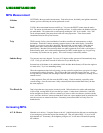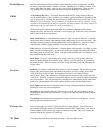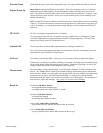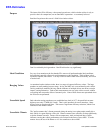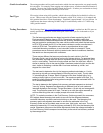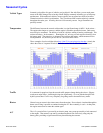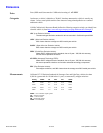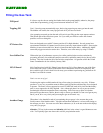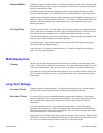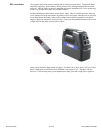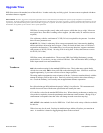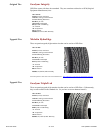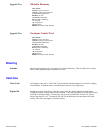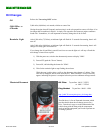NURTURING
Filling the Gas Tank
Fill Speed
It is best to use the slowest setting (the farthest latch on the pump-handle); otherwise, the pump
could shut off prematurely giving you an inaccurate indication of "full".
Topping Off
Don't! Once the pump automatically stops, don't trying squeezing any more gas into the tank.
The bladder will stretch, but it may spit gas back out if you force too much.
Also, pumping too much gas into the tank will result in gas filling up the vapor-capture canister.
That defeats part of the emissions system. So if you want your Prius to remove the cleanest
possible, avoid ever doing this.
87 Octane Gas
Prius was designed to run with 87 Octane gasoline (85 in high altitudes). Several owners have
experimented with 90 & 93 Octane; however, there wasn't any improvement to MPG. Since engine
knocking is non-existent with Prius, there's no benefit in that respect either. Additionally, higher
octane may trigger an emission sensor alert. Therefore, save some money by using 87 Octane.
Low-Sulfur Gas
Without the loss of performance or power, low sulfur gasoline helps to reduce emissions by
preventing efficiency loss within the catalytic-converter (a pollution control device) due to sulfur
build up. This also extends the life of the emission components. All gasoline sold in the United
States is mandated to be low-sulfur by January 2006.
10% Ethanol
90% Gasoline mixed with 10% Ethanol, better known as E10, will not harm any part of the Prius
fuel or emission system. Owners in the metro area of Minnesota, where E10 is required by law,
have used this type of fuel in their Prius for many years without experiencing any problems at all.
So there is no need for concern.
Empty
Don't ever run out of gas!
Not having the engine available makes driving a Prius using just electricity very risky. Without
gasoline it is very easy to push the motor & battery-pack beyond the tolerances they were designed
to operate. The motor is never supposed to exceed 42 MPH (68 km/h) all by itself and the battery-
pack is never supposed to be fully depleted. Also, without gas there's no way to prevent certain
mechanical & electrical components from overheating. Since Prius can go quite a bit further
between fill-ups than most vehicles, there's really no reason you should ever run out of gas anyway.
But if you do, drive very slowly and just enough to get out of harm's way.
Another Gauge
When there is less than half a tank of gas remaining, the gas gauge is less accurate due to the
flexible nature of the bladder within. A helpful measurement alternative is to base refill timing on
the mileage you drive. Just reset one of the three odometers (A, B, or the one on the multi-display)
every time you get gas.
450 miles (725 km) in the summer and 400 miles (644 km) in the winter is a good distance to start
with. You'll quickly figure out what works well for your particular needs.
Prius User-Guide 16 of 45 Last Updated: 2/07/2006




